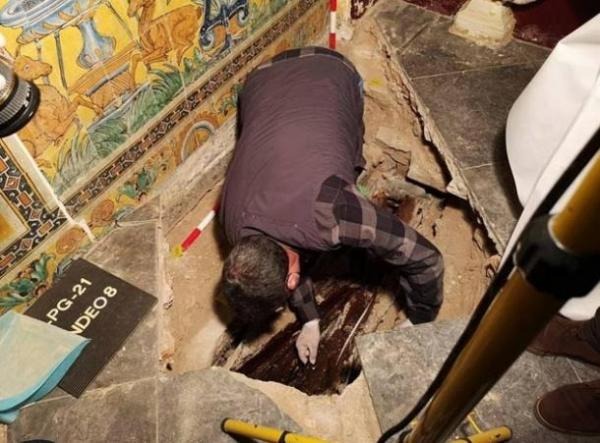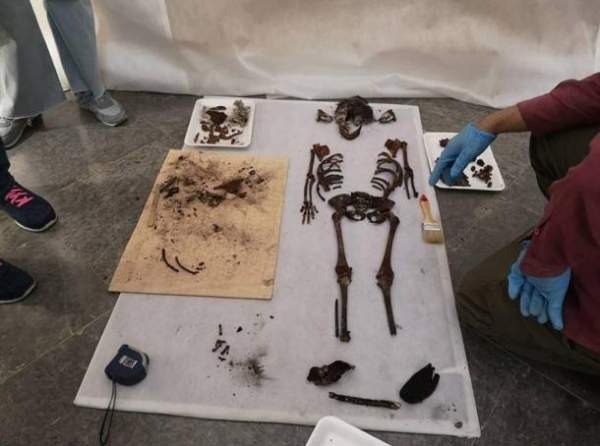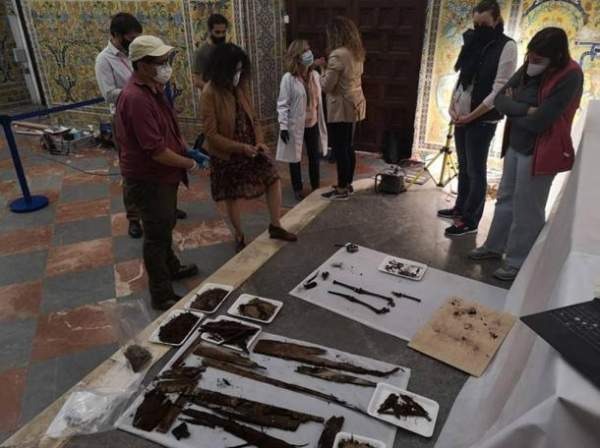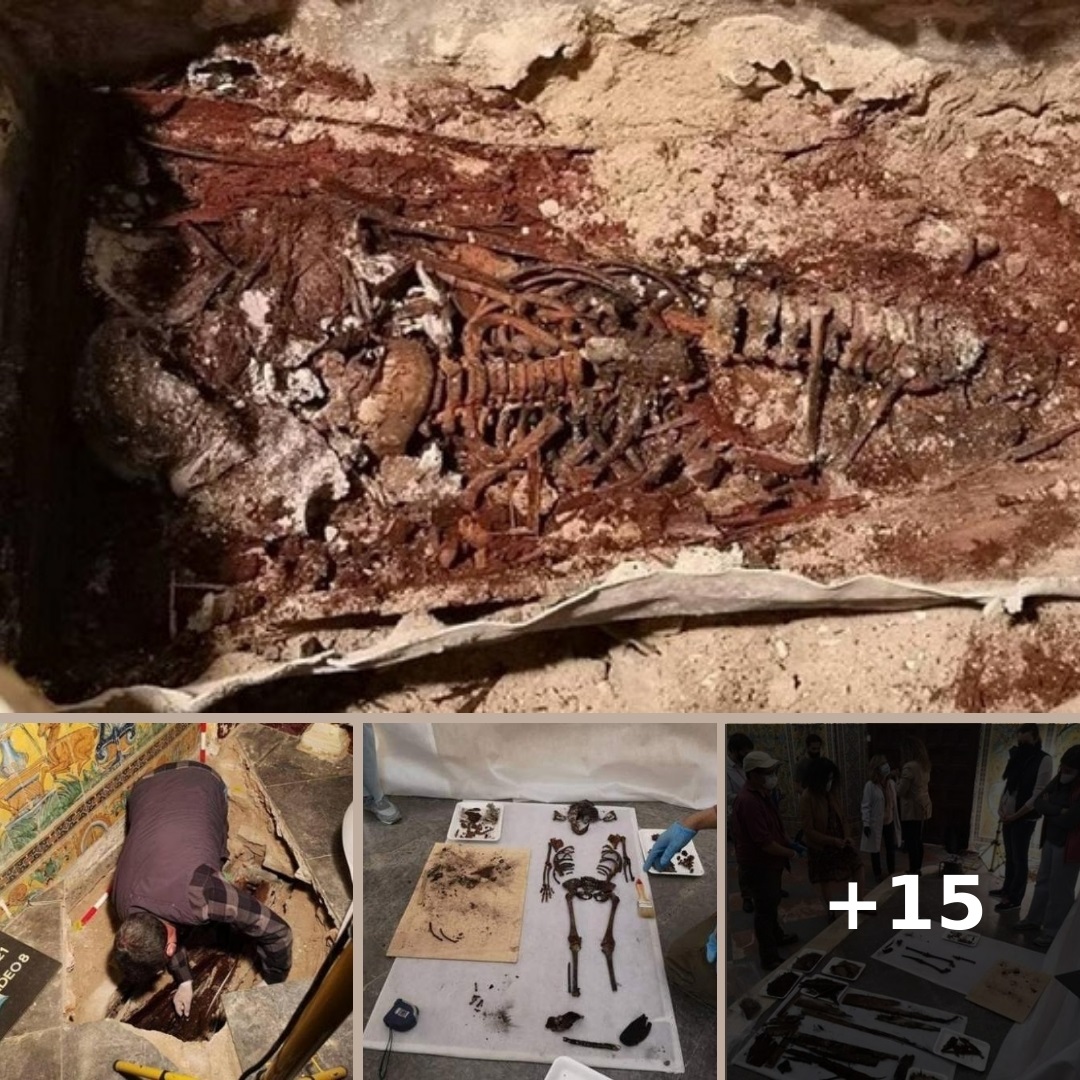Archaeologists have unearthed the skeleton of a 5-year-old, blonde-haired girl, buried in the late 13th or early 14th century beneath a chapel floor in the Real Alcázar in the Virgen de la Antigua in Seville, Spain. On analysis of this Alcázar burial , they believe her coffin was moved to an even more sacred spot beside the main altar in the 1930s. This discovery hints at the possible existence of a hidden crypt full of treasure-laden royal burials.

Unearthing the Alcázar Burial in Ancient Chapel
The little girl’s stone sarcophagus [stone cist] was found only eight inches (20 cm) beneath the floor of the chapel during renovation work in April this year. The sarcophagus itself was made from reused bricks held together with cement, and when the researchers opened the ancient stone box they discovered a lead coffin. Within the Alcázar burial lay the skeletal remains of the little, fair-haired girl strewn among the remains of fabric and leather.
Based on where she was buried, the researcher’s assumption is that the girl was most probably of noble birth. There are perhaps no conceivable circumstances that would have seen a poor girl buried in the Real Alcázar, Europe’s oldest functioning Moorish royal palace. Especially within a noble, 14th century chapel in Spain, one of the ancient homes of “class” as an organized social concept.

Arms Semi-Flexed and Crossed Over Her Thorax
The Spanish daily El Pais reported that the discovery was made on April 20, 2021, during a surveying project at the chapel prior to restoration work on the palace’s 16th century ceramic tiles in Seville. According to lead anthropologist Professor Juan Manuel Guijo, the coffin measured about 4 feet long (1.21 m) and 1 foot deep (0.3 m), which is in keeping with styles in the 13th or 14th century. The archaeologist said when he discovered the Alcázar burial, the little girl’s arms were “semi-flexed and crossed over her thorax.”
According to an article in The Daily Mail the girl was discovered completely undisturbed, and while her clothing had mostly disintegrated, the researchers discovered fragments of shoe leather and two mother-of-pearl buttons. The latter of these items again asserts that the little fair-haired girl was of noble birth. The reason why I keep making references to the girls’ blonde or fair hair is because the archaeologists discovered fragments of such hair on the nape of her neck. Detailed medical analysis of her remains also determined that a permanent molar had grown through the gum, which is how the scientists know she was at least 5 years old.

What Might Lie Beneath the Alcázar burial?
While the discovery of the little girl is remarkable in itself, there are still further mysteries which remain unresolved at this site. The first is related to the contents of 6 little boxes which were found with the human remains. Their contents are under analysis and it is thought the mystery will be solved soon. The second mystery is potentially of much more importance. The archaeologists are confident “she’s not the only person buried in the palace and they theorize there could be a crypt with other royal remains,” claims the article in The Daily Mail .
Putting this idea in context, Miguel Ángel Tabales told El Pais that the discovery of the little girl is perhaps “the tip of the iceberg,” and that “there could be more in the basement of the chapel.” The importance of this implication is realized when we consider that the construction of the Real Alcázar began under the first caliph of Andalusia in the 10th century and it is regarded as a jewel of Mudéjar architecture, a Moorish-influenced style common in Iberia from the 13th to the 16th centuries. Furthermore, the upper stories of the palace are still used by Spain’s royal family when they visit Seville, so one can only begin to imagine the layers of noble and royal burials that might emerge from this site.

